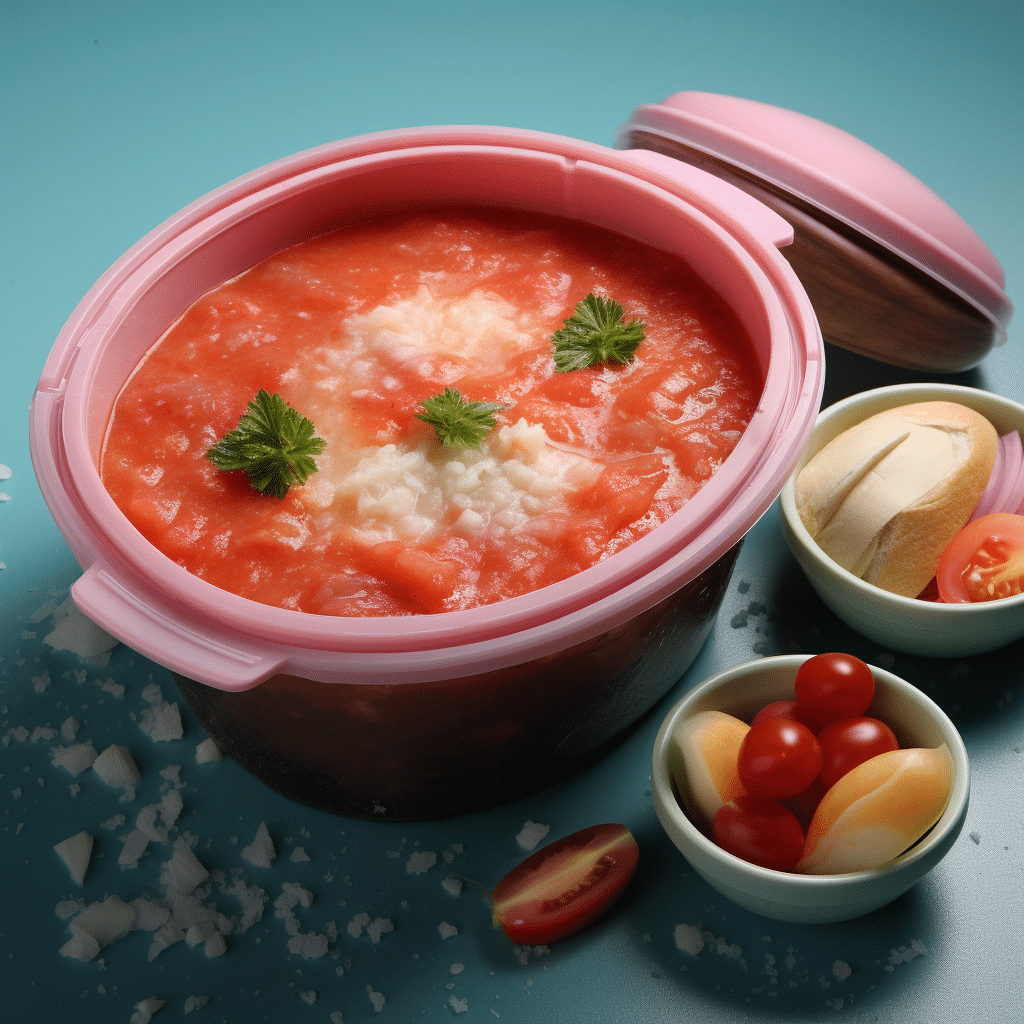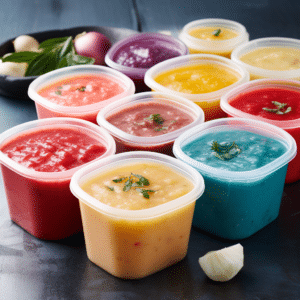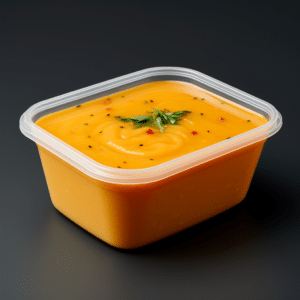
Freezing Soup in Tupperware: Tips and Methods
Indeed, yes, you can freeze soup in Tupperware. Before putting the soup inside, you can ensure the container is completely cooled down. You can also put a layer of aluminum foil over the top of the container before putting it in the freezer.
You can keep the soup at its optimal temperature for up to three months by freezing it in a Tupperware container. And when you’re ready to eat it again, simply take out what you need and put the rest back in the freezer until you need it again. This article digs deep into freezing soup in Tupperware and other methods. Keep reading to learn more.

Why Freeze Soup?
Like most people, you don’t always have time to make a large meal from scratch. When juggling work and family responsibilities, it can be hard to find the time and energy to prepare meals. So, you can quickly end this hassle by simply heading to your grocery store and buying premade soup. You will then need to buy bulk to freeze the rest for later use.
The freezing process will preserve the flavor, nutrients, and fibre in the soup. Foremost, before freezing the soup, you will need to prepare it properly before placing it in the freezer.
You’ll want to remove any ice crystals from it and then place them into freezer bags or large containers to accommodate them. Be sure to label each container with what kind of soup it contains so you can easily identify which one goes where when you’re ready for another serving!
Freezing Soup in Tupperware
If you’ve ever had a bowl of homemade soup, you know the glory of a hot bowl of soup. But what if you want to freeze that same bowl? Here’s how to freeze homemade soups and stews in Tupperware containers.
- First freeze the same day you cook it.
The most important part of freezing soup is to make sure the soup is frozen within 24 hours of cooking. If you don’t, your soup will be thawing out on top of your fridge and could spoil.
So, once you’ve cooked your soup, let it cool completely before freezing it in separate Tupperware containers or bags. Then, wrap it tightly in freezer paper or plastic wrap and label it with the contents and date.
In large soup batches, you will need to divide them into portions and put them in different containers or bags. You will then need to separate all ingredients from each other so that no other flavors compete for space in the freezer, and finally, label them to avoid confusion.
- Prepare your freezer
You’ll need to ensure your freezer is clean and uncluttered before the soup freezes. You will have to remove all of the contents of your freezer and run a full cleaning cycle on it with a high-pressure air hose or vacuum cleaner (following all safety precautions).
Then, place all your frozen soup containers in an airtight or Tupperware-style storage container.
- Make sure there’s room to grow.
When freezing your soup in a Tupperware container, you should leave enough room for growth. The soup will probably expand once it freezes, so you must pay attention to this. Similarly, you will also need to leave room for freezing other foods.
- Remove the air from the bag first.
When freezing soups, remove as much air as possible before wrapping the Tupperware container with plastic wrap or aluminum foil. This will help keep your food fresh and prevent freezer burn or crystallization.
- Freeze in batches, not all at once
As mentioned above, you should divide your soup into batches for effectiveness. It’s best not to stack multiple containers on top of each other when freezing soups; instead, freeze them individually in Tupperware containers, so they don’t touch each other.
- Use Tupperware containers that are freezer safe.
Ultimately, you should ensure that the Tupperware container you choose is freezer safe, such as those made by Rubbermaid or Glad. These containers are made from durable materials that can withstand freezing temperatures without causing any damage.
Other Ways of Freezing Soup
There are several ways to freeze soup, but the best method is the one described above. However, if it doesn’t work for you, you can try other common methods like;
- Using plastic Storage Containers
With this method, you will have to place your soup in a plastic storage container and consequently place it in the freezer. However, contrary to other methods, you won’t pay attention to the freezing soup; you will have to keep checking the container to ensure that it isn’t melting or breaking.
This method works great with soups that require quick thawing and reheating, like chilli and stews. However, the main drawback of this method is that these plastic storage bags may not be durable enough to sustain changes in temperatures while freezing, hence breaking.
- Mason Jars
If you’re looking for a quick and easy way to freeze soup, mason jars are the perfect solution. These jars are designed to be used in the oven, which means they’re already pre-sealed, so you don’t need to worry about any spills or drips during shipping.
The jars are also wide-mouthed, which means more space for your food and liquid. This makes it easier to pack in whatever ingredients you have on hand — fresh herbs or leftovers from your last meal.
They’re also great because they’re portable and lightweight, meaning they’ll travel well with you wherever life takes you!

Bottom Line
The versatility and longevity of Tupperware have surprised people for over half a century now. Of course, heat-resistant glass is just one of its many benefits, as it’s also an economical, space-saving option that can help you organize your fridge and pantry.
So, if you are looking for a better way to store soup or any other food, then Tupperware is what you want. The lids seal perfectly every time, and the plastic is thick enough to keep out as much air as possible. They are durable, portable, and attractive.